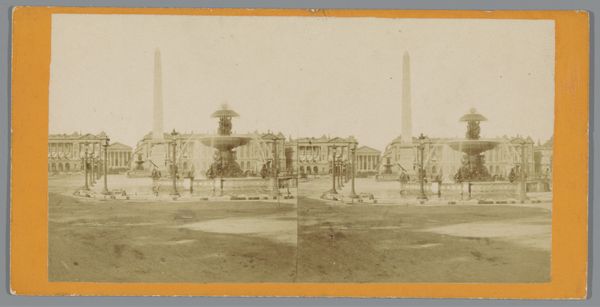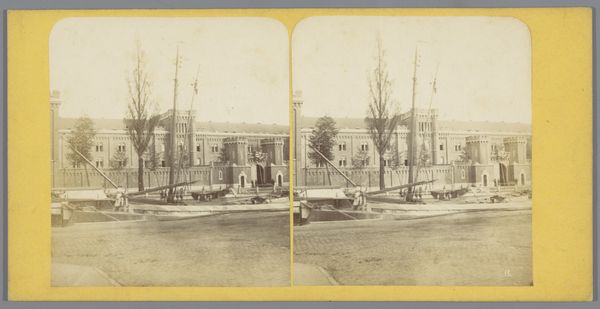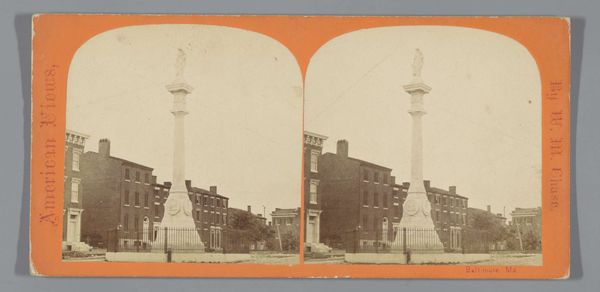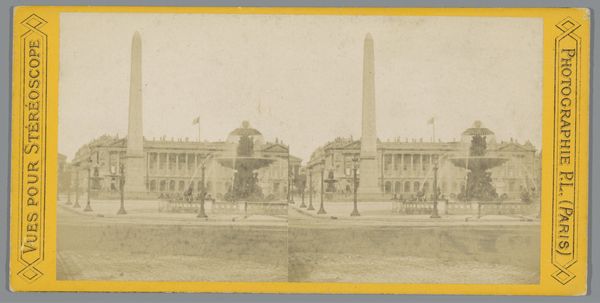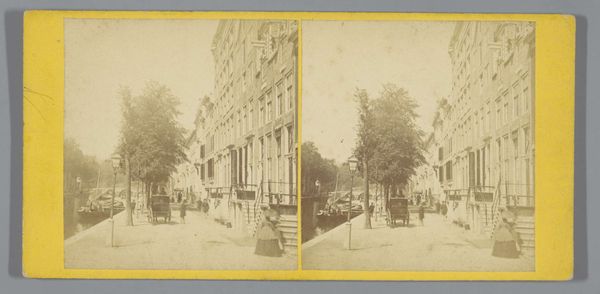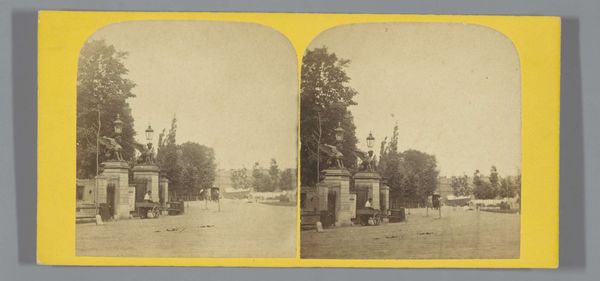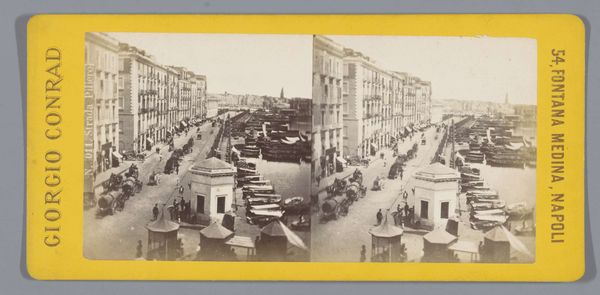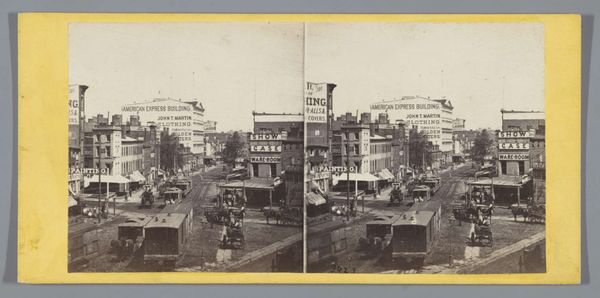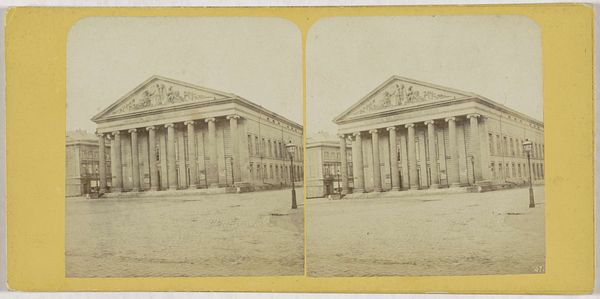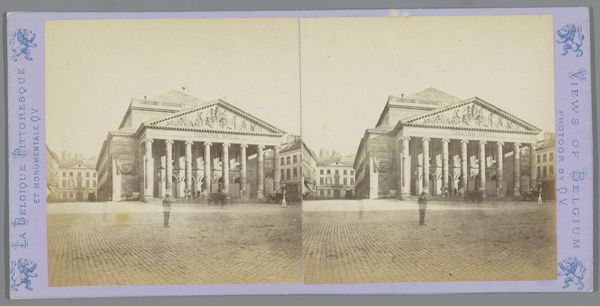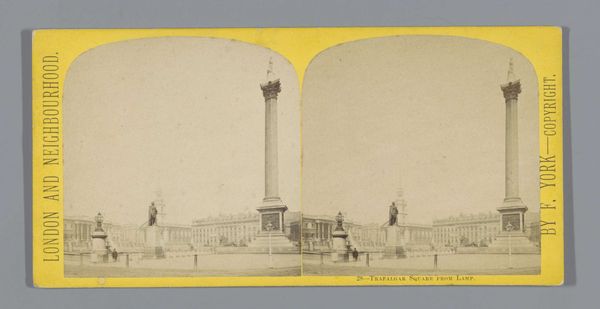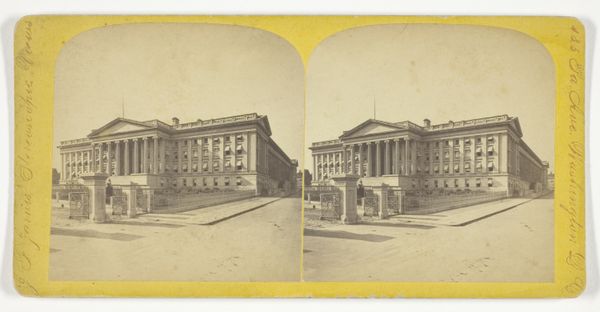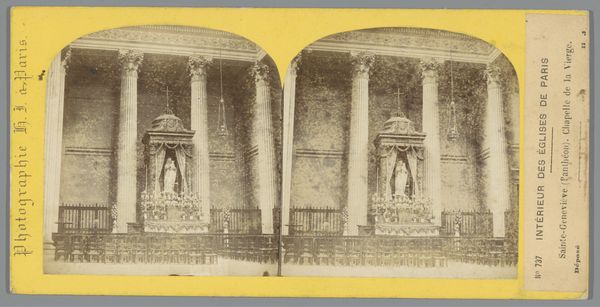
Gezicht op Place de La Concorde en daarachter La Madeleine in Parijs c. 1860 - 1880
0:00
0:00
achillequinet
Rijksmuseum
photography, gelatin-silver-print
#
photography
#
coloured pencil
#
gelatin-silver-print
#
cityscape
#
realism
Dimensions: height 88 mm, width 174 mm
Copyright: Rijks Museum: Open Domain
Editor: So, here we have a gelatin silver print titled "Gezicht op Place de La Concorde en daarachter La Madeleine in Parijs," which roughly translates to "View of Place de la Concorde and behind it La Madeleine in Paris," attributed to Achille Quinet and dated somewhere between 1860 and 1880. I find its muted tones quite elegant and the composition strikingly symmetrical. What stands out to you? Curator: The composition is certainly key. The symmetry, the interplay of geometric forms: the rigid obelisk against the cascading fountain. Observe how Quinet contrasts the textures – the rough stone of the monuments versus the fluid motion of the water. The light, almost evenly distributed, flattens the scene, emphasizing the surface qualities rather than depth. The subtle variations in tone, the delicate gradations of gray, articulate the architectural details. How do you perceive the use of space within this composition? Editor: I notice the open space in the foreground draws the eye toward the buildings in the background, creating a sense of depth, despite, as you said, the flattened perspective. But beyond that, it seems to me it is more focused on shapes rather than evoking a mood or emotion, unlike Impressionistic paintings. Curator: Precisely. This work highlights the structural elements and their relationships, effectively freezing a moment in time while showcasing form over sentimentality. Did the use of gelatine-silver print affect the artwork, you think? Editor: Well, knowing it's a gelatine-silver print, it makes me think about the process itself – the darkroom, the chemicals, the precision involved in capturing such detail. Perhaps the monochromatic palette stems from that. Curator: Indeed. The technical process inevitably informs the aesthetic outcome. Through careful manipulation of light and chemistry, Quinet orchestrates a visual symphony of shapes and textures, offering a window into 19th-century Paris and photographic practice itself. Editor: This exploration of the interplay between form and technique has changed my perspective. Curator: And for me, the discussion reminds us of the constant feedback loop between art and its means of production.
Comments
No comments
Be the first to comment and join the conversation on the ultimate creative platform.
